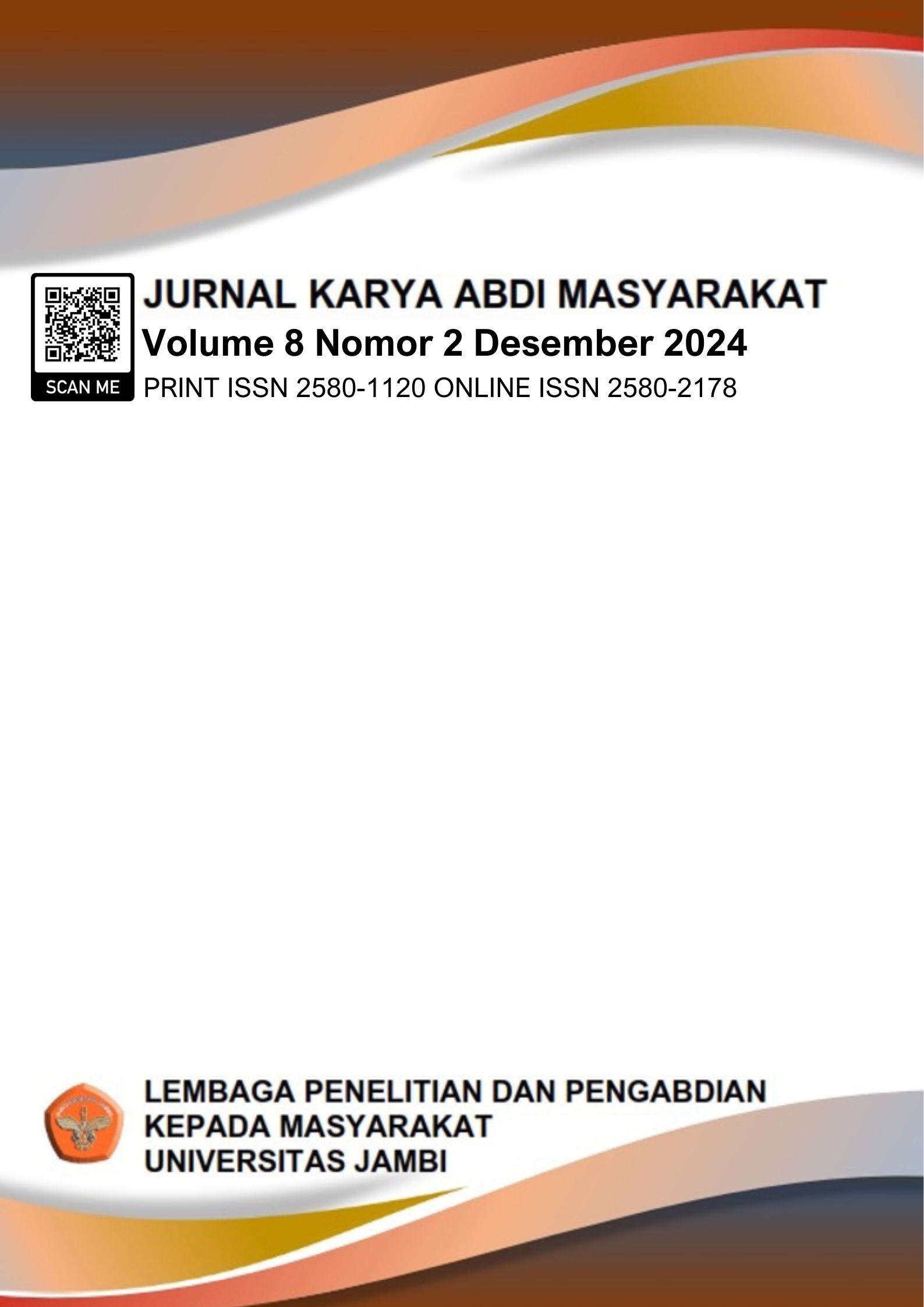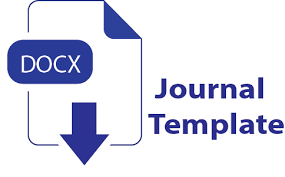Empowering Coastal Communities through Oyster Shell Waste Management and Circular Economy Practices in Gisik Cemandi
DOI:
https://doi.org/10.22437/jkam.v8i2.36931Keywords:
Circular Economy, Community Empowerment, Community Service, Livestock Feed, Oyster Shell WasteAbstract
Managing oyster shell waste in coastal regions remains a significant issue, requiring solutions that add economic value while ensuring environmental sustainability. This community service program supported residents of Gisik Cemandi Village in converting oyster shell waste into livestock feed, aligning with circular economy principles. Activities included observations, interviews, educational sessions, discussions, training, and practical application. The initiative showed promising results: 90% of participants recognized the benefits of waste processing, and 70% showed enthusiasm for future training. It effectively increased community knowledge and skills in producing livestock feed from shell waste. From a scientific perspective, it highlights the application of circular economy and social innovation using local resources. Socially, it empowered the community—particularly women in the shellfish sector—and promoted local food security. Challenges such as limited processing tools will be addressed through proposed equipment support, the formation of small cooperatives, and ongoing community-based training. These efforts aim to ensure long-term sustainability and establish Gisik Cemandi as a model for community-driven waste management that aligns with sustainable development goals.
Downloads
References
Aduldejcharas, R. (2024). Bio responsive block: The performance of bio waste material with reduced environmental impact. Results in Materials, 23, 100589. https://doi.org/10.1016/j.rinma.2024.100589
Alfiana, A., Mulatsih, L. S., Kakaly, S., Rais, R., Husnita, L., & Asfahani, A. (2023). Community empowerment in realizing a digital education village in the technology era [in Bahasa]. Community Development Journal: Jurnal Pengabdian Masyarakat, 4(4), 7113–7120. https://journal.universitaspahlawan.ac.id/index.php/cdj/article/view/18698
Ankesa, H., Amanah, S., & Asngari, P. S. (2016). Participation of women's environmental care groups in waste management in the Sub-Cikapundung Watershed, West Java [in Bahasa]. Jurnal Penyuluhan, 12(2), 105–113. https://doi.org/10.25015/penyuluhan.v12i2.10929
As, F., & Arief, M. (2022). Empowerment of village youth organizations and youth organizations in organizational governance during the COVID-19 pandemic [in Bahasa]. Jurnal Abdimas Berdaya: Jurnal Pembelajaran Pemberdayaan dan Pengabdian Masyarakat, 5(1), 80. https://doi.org/10.30736/jab.v5i01.216
Avelino, F., Wittmayer, J. M., Pel, B., Weaver, P., Dumitru, A., Haxeltine, A., ... & O’Riordan, T. (2017). Transformative social innovation and (dis)empowerment. Technological Forecasting and Social Change, 145, 195–206. https://doi.org/10.1016/j.techfore.2017.05.002
A’yuni, Q., Widiyanti, A., Ulfindrayani, I. F., Prayogi, Y. R., Arif, S., & Ningsih, A. F. L. (2019). Utilization of oyster shell waste as quality livestock feed in Tambak Cemandi Village, Sidoarjo [in Bahasa]. Journal of Science and Social Development, 2(2). https://doi.org/10.55732/jossd.v2i2.180
A’yuni, Q., Widiyanti, A., Ulfindrayani, I. F., Prayogi, Y. R., Arif, S., & Ningsih, A. F. L. (2019). Empowerment of coastal communities in Tambak Cemandi Village, Sidoarjo through processing oyster shell waste into livestock feed [in Bahasa]. e-Prosiding Seminar Nasional Teknologi dan Sains (SNasTekS), 463–472. https://journal.unusida.ac.id/index.phpsnts/article/view/117
BPS Kabupaten Sidoarjo. (2022). Sedati District in figures 2022 [in Bahasa]. BPS Kabupaten Sidoarjo. https://sidoarjokab.bps.go.id/id
Campos-Montes, G. R., Montaldo, H. H., Armenta-Córdova, M., Martínez-Ortega, A., Caballero-Zamora, A., & Castillo-Juárez, H. (2016). Incorporation of tail weight and tail percentage at harvest size in selection programs for the Pacific white shrimp Penaeus (Litopenaeus) vannamei. Aquaculture, 468, 293–296. https://doi.org/10.1016/j.aquaculture.2016.10.034
Capah, B. M., Rachim, H. A., & Raharjo, S. T. (2023). Implementation of SDG’s-12 through community development in CSR programs [in Bahasa]. Share Social Work Journal, 13(1), 150. https://doi.org/10.24198/share.v13i1.46502
Chiou, I. J., Chen, C. H., & Li, Y. H. (2014). Using oyster-shell foamed bricks to neutralize the acidity of recycled rainwater. Construction and Building Materials, 64, 480–487. https://doi.org/10.1016/j.conbuildmat.2014.04.101
D’Amato, D., Droste, N., Allen, B., Kettunen, M., Lähtinen, K., Korhonen, J., ... & Toppinen, A. (2017). Green, circular, bio economy: A comparative analysis of sustainability avenues. Journal of Cleaner Production, 168, 716–734. https://doi.org/10.1016/j.jclepro.2017.09.053
D’Armengol, L., Castillo, M. P., Ruiz-Mallén, I., & Corbera, E. (2018). A systematic review of co-managed small-scale fisheries: Social diversity and adaptive management improve outcomes. Global Environmental Change, 52, 212–225. https://doi.org/10.1016/j.gloenvcha.2018.07.009
Firdiati, R. A., & Nurahaju, R. (2021). Subjective well-being of fishermen’s wives in Gisik Cemandi Village, Sidoarjo [in Bahasa]. Jurnal Psikologi Perseptual, 6(1), 46–52. https://doi.org/10.24176/perseptual.v61.5086
Jović, M., Mandić, M., Šljivić-Ivanović, M., & Smičiklas, I. (2019). Recent trends in application of shell waste from mariculture. Studia Marina, 32(1), 47–62. http://dx.doi.org/10.5281/zenodo.3274471
Jung, S., Heo, N. S., Kim, E. J., Oh, S. Y., Lee, H. U., Kim, I. T., ... & Huh, Y. S. (2016). Feasibility test of waste oyster shell powder for water treatment. Process Safety and Environmental Protection, 102, 129–139. https://doi.org/10.1016/j.psep.2016.03.004
Katrina, G. (2014). Utilization of oyster shell waste as sand substitute and bagasse ash as cement substitute in K-225 concrete mix [in Bahasa]. Journal of Civil and Environmental Engineering, 2(3). https://core.ac.uk/reader/267823170
Kusrini, N., Amanah, S., & Fatchiya, A. (2013). Community attitudes towards the development program of resilient coastal villages in Teluknaga, Tangerang, Banten [in Bahasa]. Sosio Konsepsia, 3(1), 287–300. http://ejournal.kemsos.go.id/index.php/SosioKonsepsia/article/view/782/380
Paris, J. M., Roessler, J. G., Ferraro, C. C., DeFord, H. D., & Townsend, T. G. (2016). A review of waste products utilized as supplements to Portland cement in concrete. Journal of Cleaner Production, 121, 1–18. https://doi.org/10.1016/j.jclepro.2016.02.013
Pelly, D. A., Fauziah, N., & Susanti, R. C. (2018). Coastal area function directives for improving community economy towards sustainable spatial planning [in Bahasa]. Seminar Nasional IV Pengelolaan Pesisir dan Daerah Aliran Sungai, Yogyakarta. https://www.researchgate.net/publication/334282702_Arahan_Fungsi_Kawasan_Pesisir_Untuk_Peningkatan_Ekonomi_Masyarakat_Menuju_Perencanaan_Tata_Ruang_Wilayah_Pesisir_Yang_Berkelanjutan_Studi_Kasus_di_Kecamatan_Grabag_Kabupaten_Purwerejo
Prasetyo, B., Subali, E., Hendrajati, E., Trisyanti, U., & Moerad, S. K. (2022). Branding and promotion of Pesona Desa Gisik Cemandi coastal tourism area [in Bahasa]. Bakti Budaya: Jurnal Pengabdian kepada Masyarakat, 5(2), 146–157. https://doi.org/10.22146/bakti.3548
Radkar, A. (2022). Realities of Indian population. In Changing Dynamics of The Indian Economy: The Decade of Twenty-Tens and Ahead (pp. 211–220). S A Printers LLP. https://www.researchgate.net/publication/384701396
Seesanong, S., Seangarun, C., Boonchom, B., Laohavisuti, N., Thompho, S., Boonmee, W., Mongkol, S., & Rungrojchaipon, P. (2023). Bio-green synthesis of calcium acetate from oyster shell waste at low cost and reducing the emission of greenhouse gases. Sustainable Environment Research, 33(1). https://doi.org/10.1186/s42834-023-00187-6
Setyaningrum, H. I., Mangisah, I., & Wahyono, F. (2007). Increasing the productivity of Kedu chicken farming through ration quality improvement and biosecurity against avian influenza in Kedu District, Temanggung Regency [in Bahasa]. Faculty of Animal Husbandry, Diponegoro University, Technology Application Program Report.
Shahin, M., Khanam, M., Aktar, S., Siddiqua, A., & Sharif, N. (2022). Resiliency of livelihood and empowerment of women: Results of a cash-based intervention in Bangladesh’s Lalmonirhat District. International Journal of Disaster Risk Reduction, 79, 103137. https://doi.org/10.1016/j.ijdrr.2022.103137
Silva, T. H., Mesquita-Guimarães, J., Henriques, B., Silva, F. S., & Fredel, M. C. (2019). The potential use of oyster shell waste in new value-added by-product. Resources, 8(1), 13. https://doi.org/ 10.3390/resources8010013
Topić Popović, N., Lorencin, V., Strunjak-Perović, I., & Čož-Rakovac, R. (2023). Shell waste management and utilization: Mitigating organic pollution and enhancing sustainability. Applied Sciences, 13(1), 623. https://doi.org/10.3390/app13010623
Tsai, H. Y., Hamilton, A., Guy, D. R., Tinch, A. E., Bishop, S. C., & Houston, R. D. (2015). The genetic architecture of growth and fillet traits in farmed Atlantic salmon (Salmo salar). BMC Genomic Data, 16(1). https://doi.org/10.1186/s12863- 0150215-y
Vandeputte, M., Puledda, A., Tyran, A. S., Bestin, A., Coulombet, C., Bajek, A., ... & Haffray, P. (2016). Investigation of morphological predictors of fillet and carcass yield in European sea bass (Dicentrarchus labrax) for application in selective breeding. Aquaculture, 470, 40–49. https://doi.org/10.1016/j.aquaculture.2016.12.014
Zhan, J., Lu, J., & Wang, D. (2022). Review of shell waste reutilization to promote sustainable shellfish aquaculture. Reviews in Aquaculture, 14(1), 477–488. https://doi.org/10.1111/raq.12610
Downloads
Published
How to Cite
Issue
Section
License
Copyright (c) 2024 Muchammad Tamyiz, Agus Rachmad Purnama, Faris Reza Prasetyo

This work is licensed under a Creative Commons Attribution 4.0 International License.
Please find the rights and licenses in Jurnal Jurnal Karya Abdi Masyarakat (JKAM).
- License
The non-commercial use of the article will be governed by the Creative Commons Attribution license as currently displayed on Creative Commons Attribution 4.0 International License.
- Authors Warranties
The author warrants that the article is original, written by stated author(s), has not been published before, contains no unlawful statements, does not infringe the rights of others, is subject to copyright that is vested exclusively in the author and free of any third party rights, and that any necessary written permissions to quote from other sources have been obtained by the author(s).
- User Rights
JKAM's spirit is to disseminate articles published are as free as possible. Under the Creative Commons license, JKAM permits users to copy, distribute, display, and perform the work for non-commercial purposes only. Users will also need to attribute authors and JKAM on distributing works in the journal.
- Rights of Authors
Authors retain the following rights:
- Copyright, and other proprietary rights relating to the article, such as patent rights,
- The right to use the substance of the article in future own works, including lectures and books,
- The right to reproduce the article for own purposes, provided the copies are not offered for sale,
- The right to self-archive the article.
- Co-Authorship
If the article was jointly prepared by other authors, the signatory of this form warrants that he/she has been authorized by all co-authors to sign this agreement on their behalf, and agrees to inform his/her co-authors of the terms of this agreement.
- Termination
This agreement can be terminated by the author or JKAM upon two months notice where the other party has materially breached this agreement and failed to remedy such breach within a month of being given the terminating party notice requesting such breach to be remedied. No breach or violation of this agreement will cause this agreement or any license granted in it to terminate automatically or affect the definition of JKAM.
- Royalties
This agreement entitles the author to no royalties or other fees. To such extent as legally permissible, the author waives his or her right to collect royalties relative to the article in respect of any use of the article by JKAM or its sublicensee.
- Miscellaneous
JKAM will publish the article (or have it published) in the journal if the articles editorial process is successfully completed and JKAM or its sublicensee has become obligated to have the article published. JKAM may conform the article to a style of punctuation, spelling, capitalization, referencing and usage that it deems appropriate. The author acknowledges that the article may be published so that it will be publicly accessible and such access will be free of charge for the readers.






